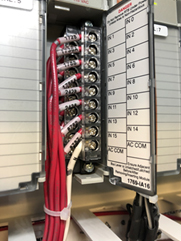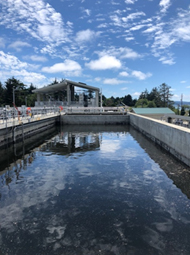The Contractor's Song: Senses Working Overtime — Start-Up And Commissioning Water Infrastructure
By Jeremy Holland

“Trying to tell the difference 'tween
the goods and grime
turds and treasure and there's
one, two, three, four, five
Senses working overtime”
-XTC
I’ve talked a bit in past articles about start-up and commissioning, but this month I’m going to dig a bit deeper into what goes on during this critical part of completing a water infrastructure project. In my experience, it is nearly always true that, with all the effort to design and build water infrastructure, there tends to be an intensity toward the end of the project to getting it up and running. There is contractual pressure for the contractor to meet a substantial completion milestone; and, depending on the type of project or the owner’s needs, there can also be critical operation conditions which drive the need to complete the work. As a result, it requires an “all hands — all senses” approach, working overtime to maintain the energy needed to get the project through this phase and fully completed.
Starting the handoff — Trying to take this all in
Planning is the key when beginning to think about starting up a facility. Depending on the scale of what has been constructed this could be a highly complicated electrical/mechanical/biological facility. It could be a brand-new facility or systems that must integrate with an existing facility. Even something as simple (conceptually) as a gravity sewer pipeline may require careful consideration to tie into existing infrastructure, operate bypass pumping, and maintain safe conditions. Disruption avoidance is a major focus of the planning effort, right alongside carefully mapping out the steps needed to take separate pieces of equipment that have been installed but not activated and turn them into a fully functioning facility.

Contractors are responsible for managing the start-up and commissioning phase as a final step to closing out the project. This effort includes a myriad of activities such as:
- coordinating with vendors
- providing start-up with their equipment
- training owner’s staff
- coordinating and compiling operations and maintenance manuals
- functional checks of electrical and controls systems
- initial operation to confirm mechanical function
- clean water testing to verify hydraulics and equipment performance
Commissioning — There’s food for the thinkers (or the bugs in this case!)

Coda — Finish strong so that “all sleep safely!”
We often say that we start thinking about start-up even before we get on site. While that may be true, it is also very easy to get focused on getting the work built and taking an eye off what needs to be done at the end. Usually by the end of the project, the team can also start thinking about what their next project will be, and may even be starting to spend some time in a preconstruction phase to prepare for that next project. What is important is to maintain continuity of the project team, carefully plan what needs to happen during start-up and commissioning and adhere to that plan until the facility is fully turned over. Diligence and attention to detail allows everyone to wrap up a project successfully, so that “all sleep safely!”
 Jeremy Holland is a Market Executive in the Water Infrastructure Market in Mortenson Seattle’s Operating Group. With 23 years of engineering experience, Jeremy has served as project principal, technical advisor, project manager, and design engineer. His industry knowledge spans a wide variety of projects, clients, disciplines, and engineering problems. A licensed Professional Engineer in Oregon, WA, and Puerto Rico, Jeremy received a Bachelor of Science in Chemical Engineering and a Bachelor of Arts in English from the University of Notre Dame, and a master’s degree in Business Administration from Portland State University. He is a board member of the Oregon Association of Clean Water Agencies and is the Co-Chair of the Water Quality Committee.
Jeremy Holland is a Market Executive in the Water Infrastructure Market in Mortenson Seattle’s Operating Group. With 23 years of engineering experience, Jeremy has served as project principal, technical advisor, project manager, and design engineer. His industry knowledge spans a wide variety of projects, clients, disciplines, and engineering problems. A licensed Professional Engineer in Oregon, WA, and Puerto Rico, Jeremy received a Bachelor of Science in Chemical Engineering and a Bachelor of Arts in English from the University of Notre Dame, and a master’s degree in Business Administration from Portland State University. He is a board member of the Oregon Association of Clean Water Agencies and is the Co-Chair of the Water Quality Committee.
